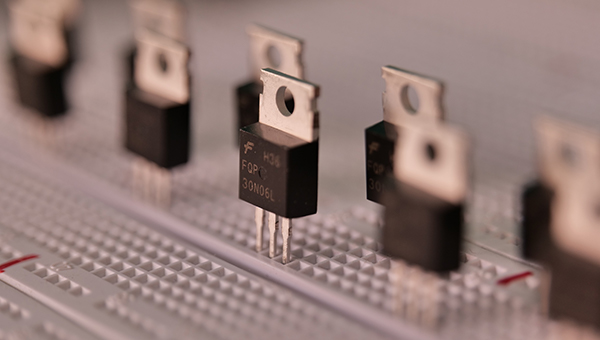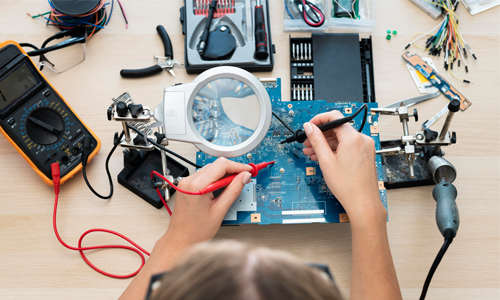Transistor Modern technology Electronics 2023

Introduction
A transistor is an electronic device that can amplify or switch electronic signals. It is the fundamental building block of modern electronics and has revolutionized the way we live, work, and communicate. The invention of the transistor in 1947 by John Bardeen, Walter Brattain, and William Shockley at Bell Labs ushered in the age of modern electronics, and it remains a crucial component in everything from microprocessors to radios to medical devices.
A transistor is made up of three layers of semiconductor material, typically silicon. The middle layer is called the base, while the outer layers are the emitter and the collector. The base is doped with impurities to make it either p-type or n-type, while the emitter and collector are doped with the opposite type. When a voltage is applied to the base, it creates a current flow between the emitter and collector, allowing the transistor to amplify or switch signals.
Transistors are commonly used in electronic circuits to control the flow of electricity. They can be used as switches to turn electronic devices on and off or as amplifiers to increase the strength of a signal. They are also used in digital circuits to store and process information. The invention of the transistor paved the way for the development of integrated circuits, which contain millions of transistor on a single chip.
Transistors come in many different shapes and sizes, from tiny surface-mount components to large power transistr capable of handling hundreds of amps of current. They are used in a wide range of applications, from consumer electronics to aerospace to medical devices. The continued development of transistors has led to faster, more efficient, and more powerful electronic devices, making them an essential component of modern technology.
Table of Contents
History of the Transistor

The transistor was first invented by three researchers at Bell Labs in 1947: William Shockley, John Bardeen, and Walter Brattain. Their invention was a breakthrough in electronics, as it allowed for the creation of a solid-state amplifier that could replace bulky vacuum tube technology. The first transistor was made from germanium, but today, silicon is the most commonly used material.
How Transistors Work

Transistors are essentially tiny switches that can be used to control the flow of electricity. They consist of three layers of semiconductor material: a collector, a base, and an emitter. By applying a small voltage to the base, the transistr can allow a much larger current to flow between the collector and emitter.
Types of Transistors

There exist two primary categories of transit : bipolar junction transit (BJTs) and field-effect transit (FETs), each with their own unique characteristics and applications. BJTs are the more traditional type of transit and are used in applications such as amplifiers and switching circuits. FETs are more commonly used in digital circuits and have lower power consumption.
Applications of Transistors
transit are used in a wide variety of electronic devices, including computers, smartphones, televisions, and radios. They are also used in automotive systems, medical equipment, and aerospace technology. transit have made many of our modern conveniences possible and have revolutionized the world of electronics.
The Future of transit

As technology continues to advance, so do the capabilities of transit . Researchers are currently exploring ways to create smaller and more efficient transit using materials such as graphene and carbon nanotubes. These advancements could lead to even more powerful and energy-efficient electronics.
Conclusion
The transit is an essential building block of modern electronics. Its invention in 1947 paved the way for countless technological advancements and has revolutionized the world of electronics. From smartphones to medical equipment, transit are used in a wide variety of applications and continue to play a crucial role in our daily lives.
FAQs
1. What is a transit used for?
transit are used in electronic devices to control the flow of electricity and amplify signals.
2. How do transit differ from vacuum tubes?
transit are much smaller and more energy-efficient than vacuum tubes, making them the preferred technology for most modern electronic devices.
3. What is the future of transit ?
Researchers are exploring ways to create smaller and more efficient transit using materials such as graphene and carbon nanotubes.
4. What is the difference between BJTs and FETs?
BJTs are the more traditional type of transit and are used in applications such as amplifiers and switching circuits. FETs are more commonly used in digital circuits and have lower power consumption.
5. Who invented the transit
The transit was first invented by three researchers at Bell Labs in 1947: William Shockley, John Bardeen, and Walter Brattain.


2 thoughts on “Transistor Modern technology Electronics 2023”